Grandeur, artistry intertwined in Wanli relics
Writer: Cao Zhen | Editor: Zhang Chanwen | From: Original | Updated: 2024-01-15
History lovers can admire stunning artifacts at the “Years of Wanli” exhibition at the Nanshan Museum. The 120 relics were from the reign (1573-1620) of the Wanli Emperor Zhu Yijun in the Ming Dynasty (1368-1644).
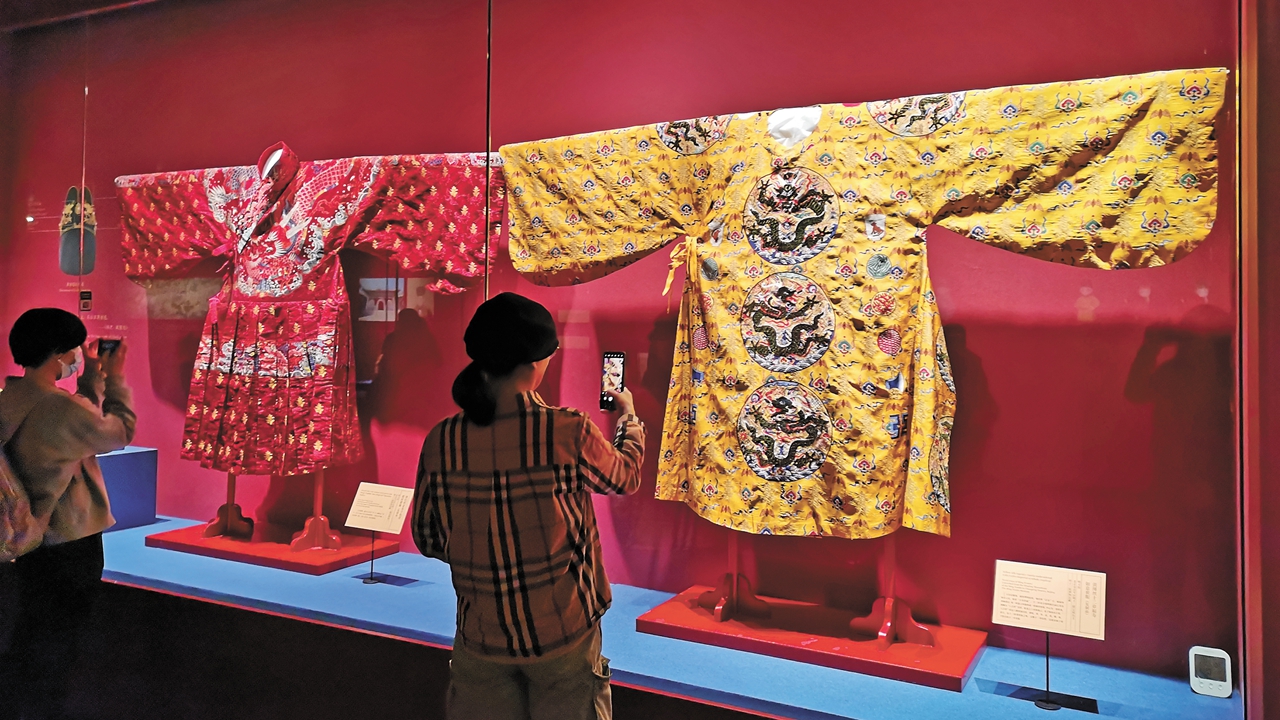
Visitors take photos of replicas of the Wanli Emperor’s robes at Nanshan Museum. Photos by Cao Zhen
Primarily excavated from the Dingling Mausoleum in Beijing and through underwater archaeological discoveries, the exhibits provide a rare insight into the Ming imperial life and the exquisite craftsmanship of the era.
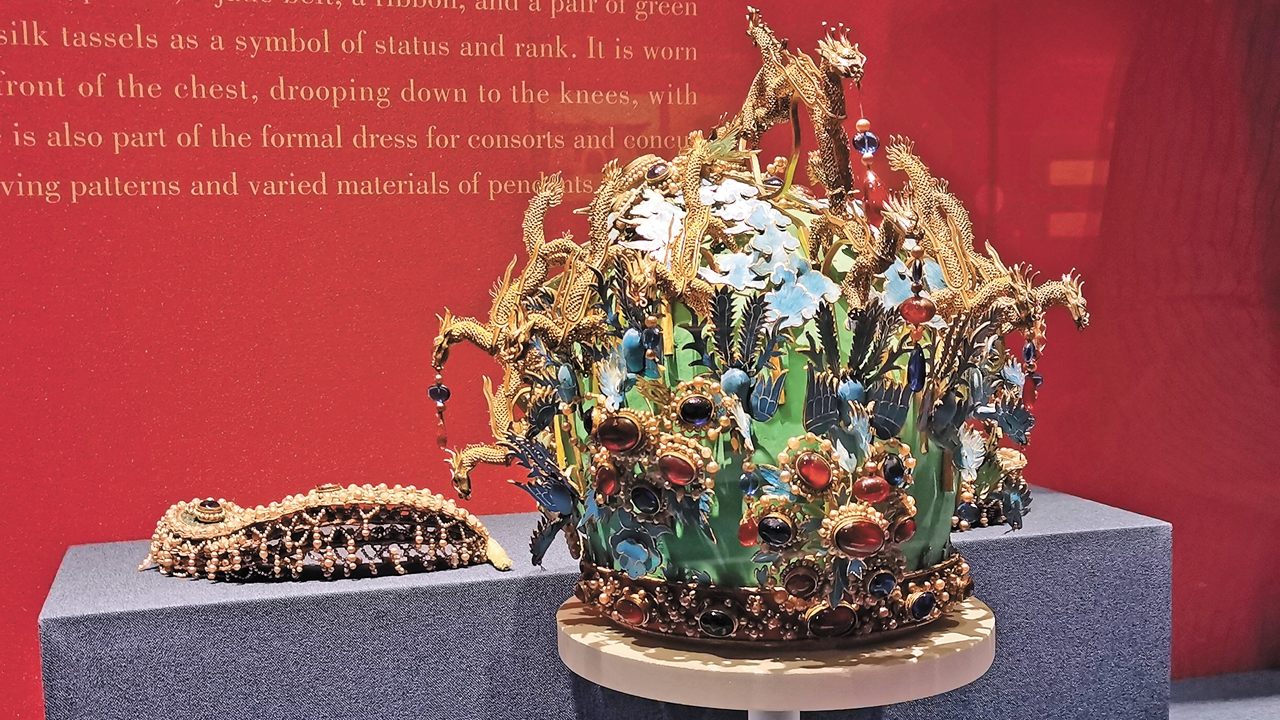
A replica of an empress’ crown embellished with 12 dragons, nine phoenixes and jewels.
Upon entering the exhibition hall, visitors will be awed by replicas of robes and crowns of the Wanli Emperor and his empresses. The opulent silk and satin robes, adorned with a myriad of imperial symbols, stand as imposing testaments to the magnificence of the period. The emperor’s complex gold crown hat, woven with 852 ultra-thin gold threads, and an empress’ resplendent crown, embellished with 12 dragons, nine phoenixes and an array of jewels, are truly a sight to behold.
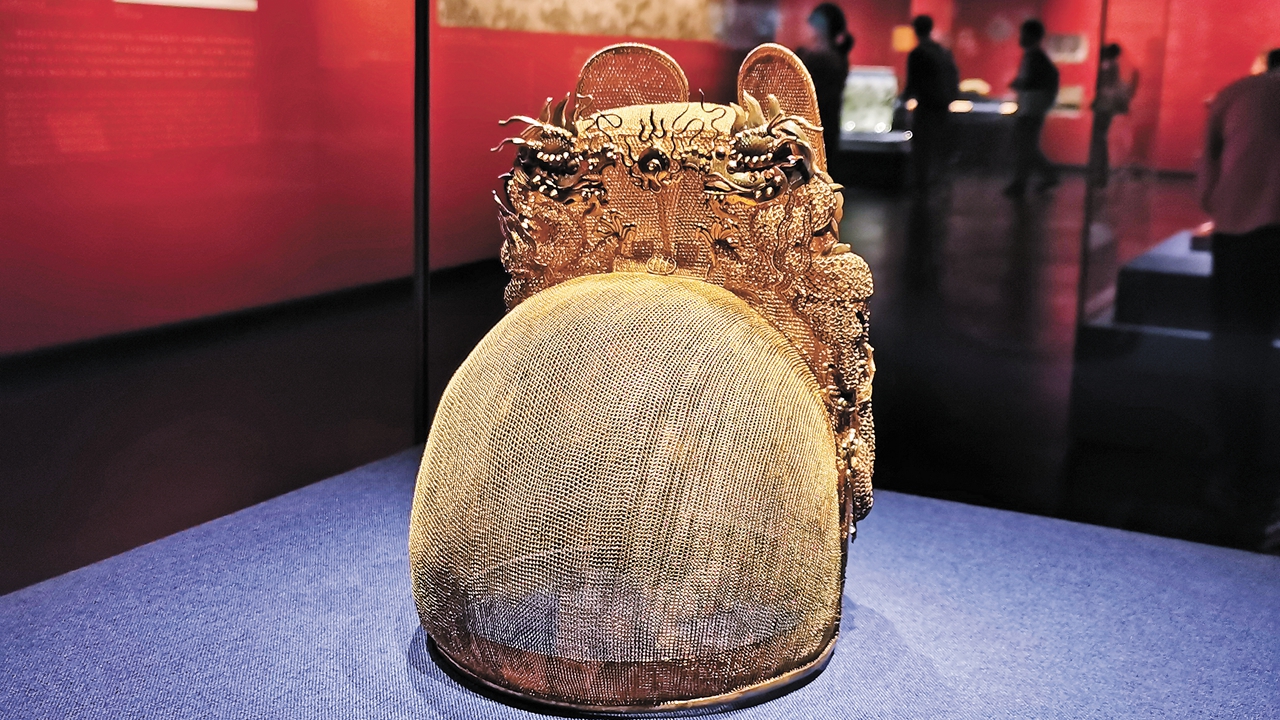
A replica of the Wanli Emperor’s gold crown hat, woven with 852 ultra-thin gold threads.
During the Wanli Emperor’s 48-year reign, the Ming Dynasty underwent significant transformation, especially during the initial decade, owing to a series of reforms spearheaded by prime minister Zhang Juzheng. This period witnessed a flourishing commodity economy, a vibrant academic environment and frequent cultural exchanges between China and the West.
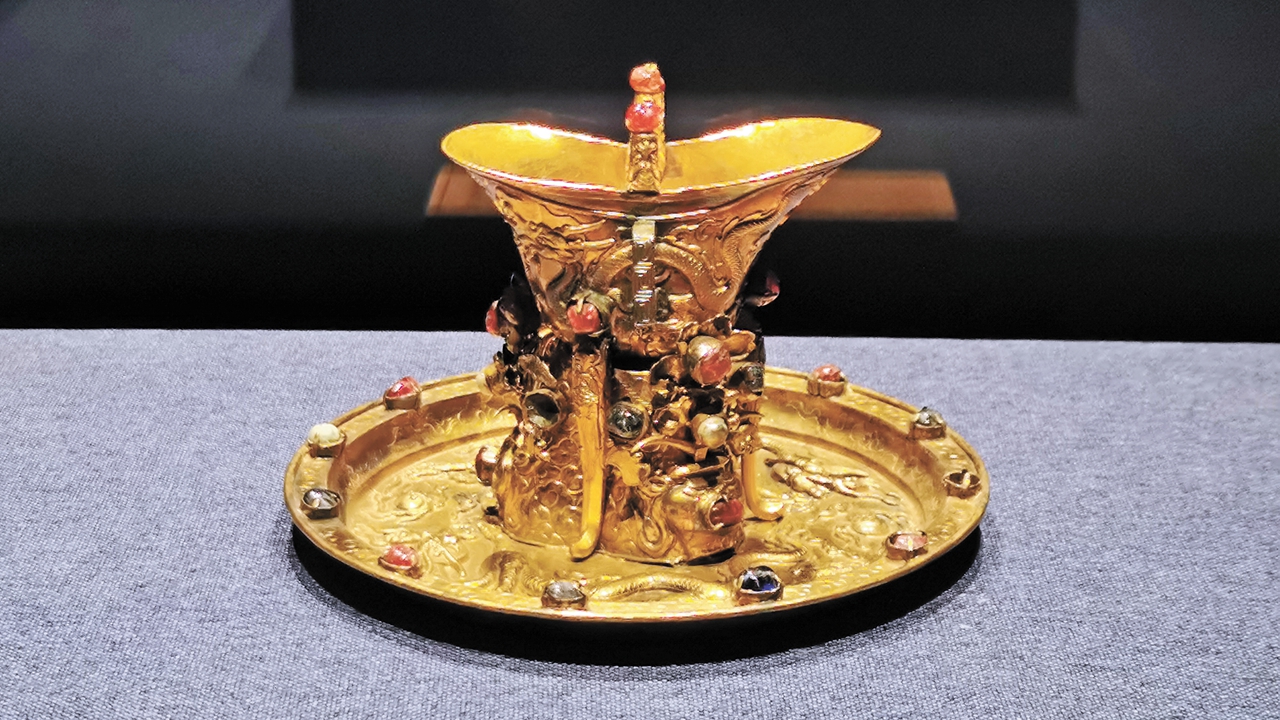
A gold vessel and a gold tray adorned with shimmering gems.
In the latter part of Wanli’s reign, the empire faced political upheaval, yet despite this turbulence, the culture and art of the era continued to flourish. Artifacts from this period, including everyday items and imperial utensils, afford modern viewers a glimpse into the colorful late Ming Dynasty.
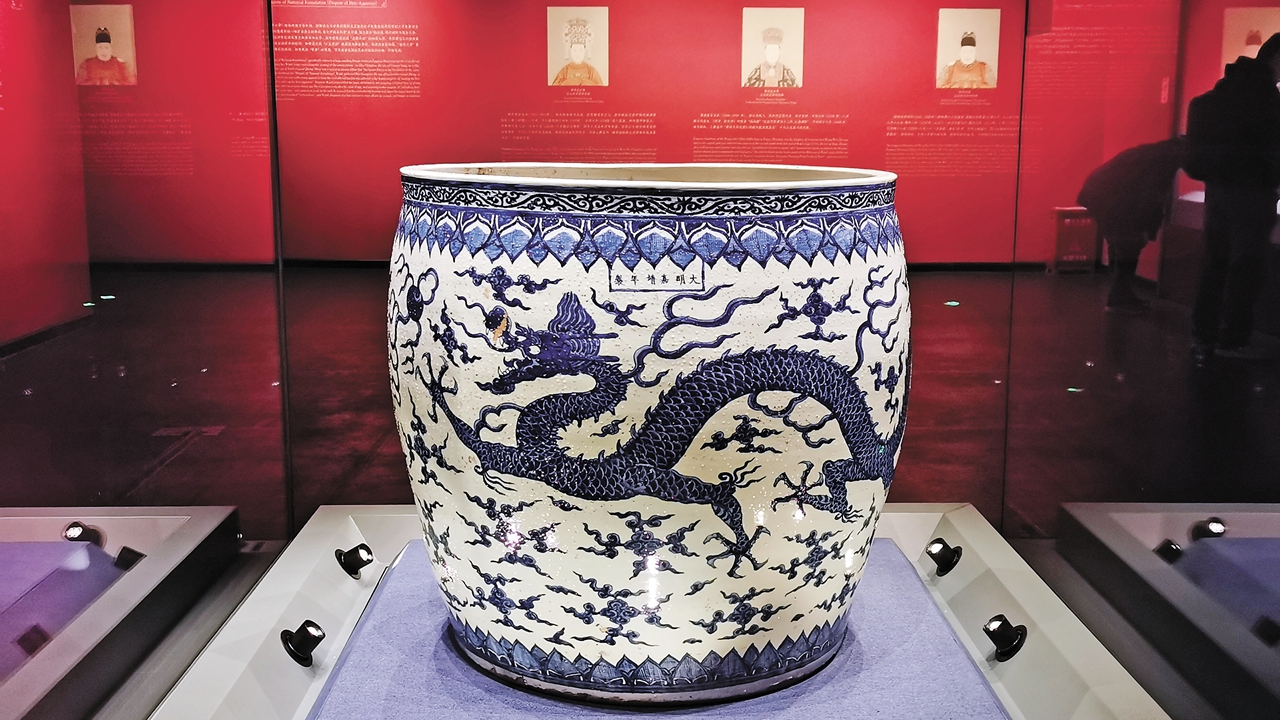
A blue-and-white porcelain vat with cloud and dragon designs.
Whether it’s a large blue-and-white porcelain vat with cloud and dragon designs, a gold vessel adorned with shimmering gems, a jade bowl with an intricately crafted hollow-out gold cover, or an array of accessories encrusted with gems, each piece reflects the Ming Dynasty’s dedication to artistic expression.
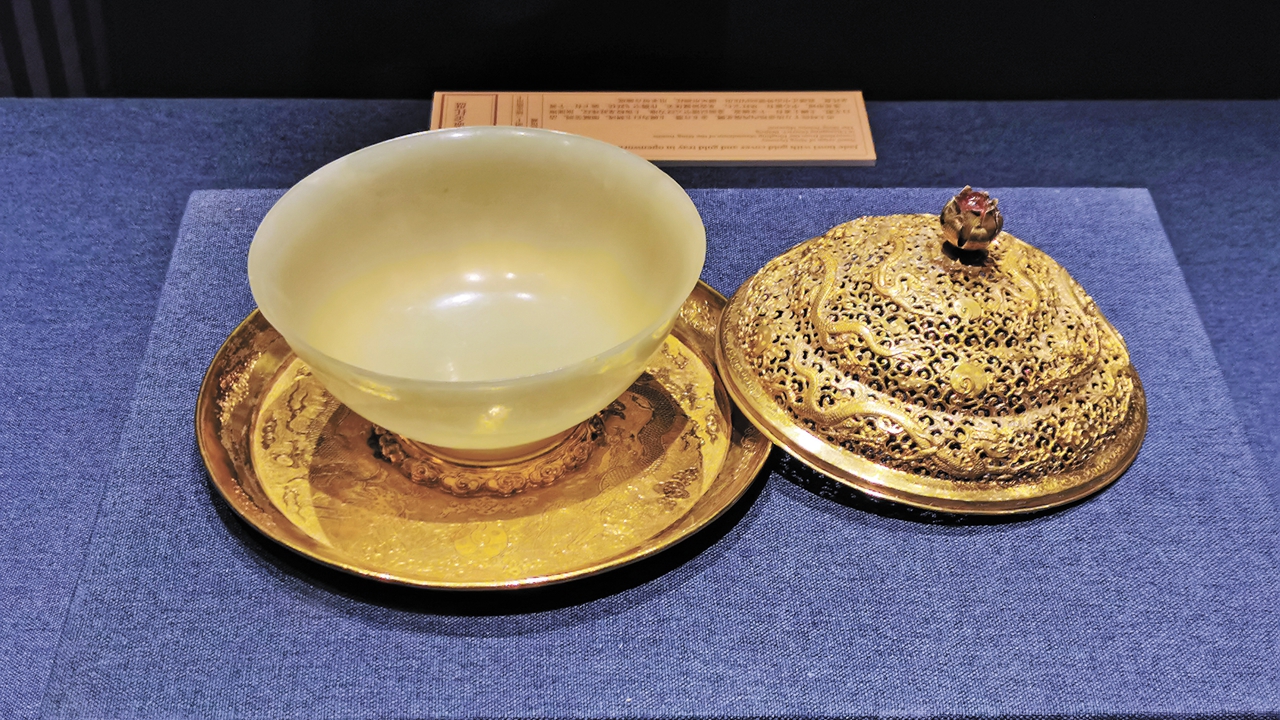
A jade bowl with a gold tray and an intricately crafted hollow-out gold cover.
At the exhibition, many visitors are drawn to capture the splendor of the garments through photography. Detailed bilingual information on the rituals, imperial dresses, history and culture at the exhibition leaves visitors with a profound understanding of the Wanli era and the Ming Dynasty, a time of unparalleled cultural richness and creativity.
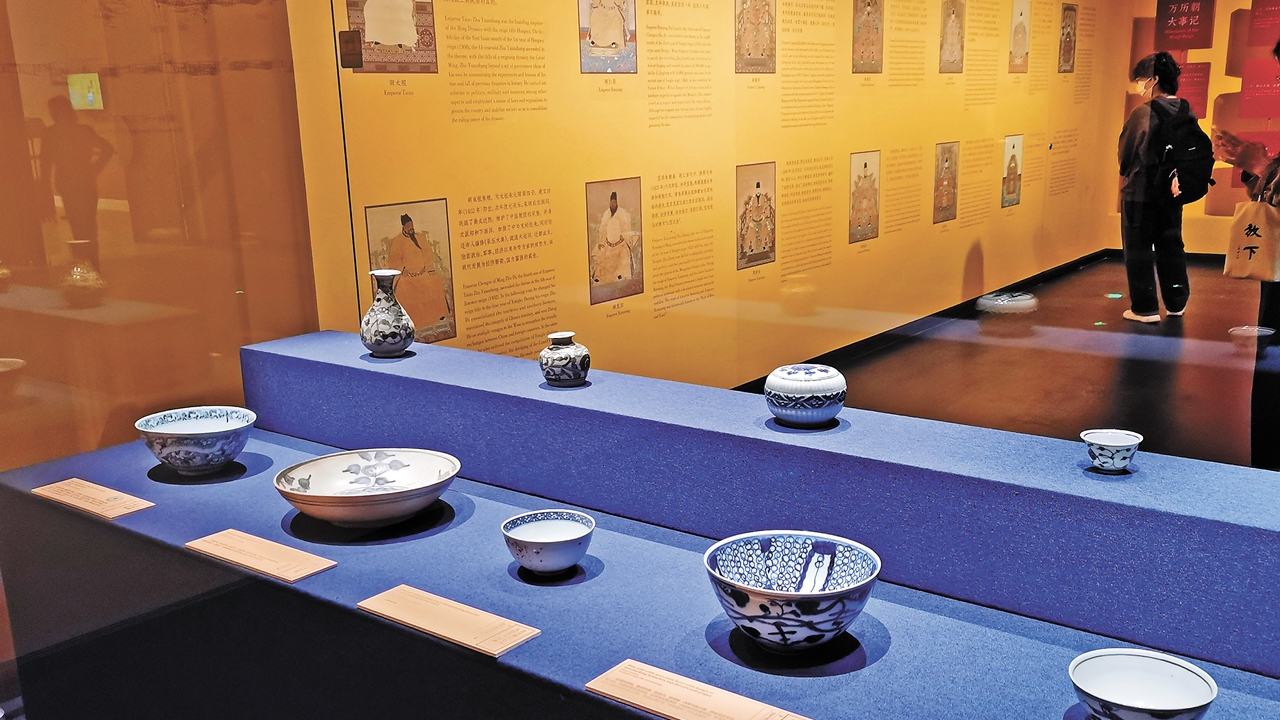
Porcelain items produced in Jingdezhen and Zhangzhou during the Ming Dynasty are on display.
Dates: Through March 31
Venue: Nanshan Museum (南山博物馆)
Metro: Line 1 or 12 to Taoyuan Station (桃园站), Exit B